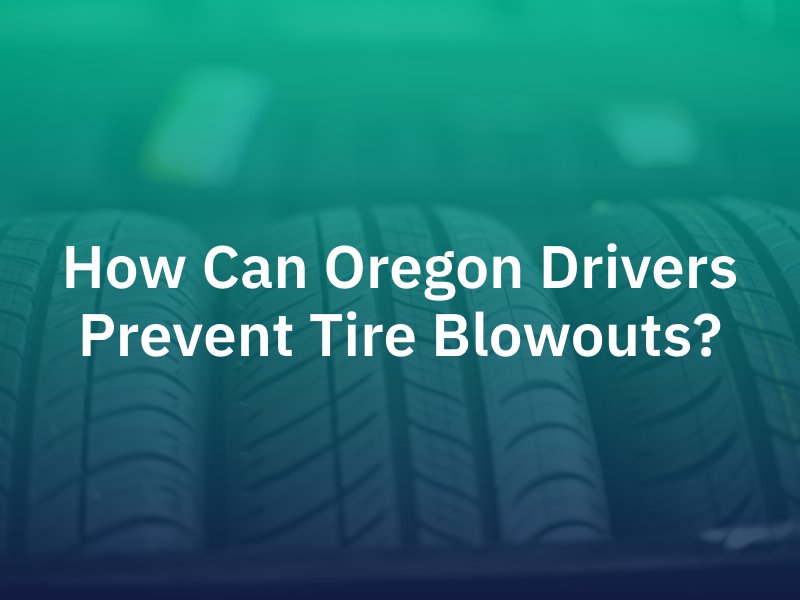How Can Oregon Drivers Prevent Tire Blowouts?
Posted on May 4, 2020 in Car Accident
When you are driving down the road, the last thing you ever expect to occur is a tire blowout. Unfortunately, these incidents do occur, and they can lead to severe injuries for you, passengers, and others on the roadway around your vehicle. The good news is that most tire blowout incidents are preventable, and there are steps you can take to ensure that this never happens. You can prevent a tire blowout in Oregon by following these steps.

Check tire pressure regularly
One of the most important aspects of keeping your vehicle roadworthy is tire pressure. Maintaining adequate tire pressure is also the best way to prevent a blowout. It is recommended to check tire pressure monthly, and that you make sure they are filled to the required PSI if air pressure is too low. Many newer vehicles have air pressure sensors built-in that will alert you if the pressure changes. However, you should still check the air pressure yourself manually on a monthly basis. An improperly inflated tire means the tire has to work harder, causing it to overheat and blowout while on the roadway.
Replace tires on a schedule
You should always replace your tires on a schedule. According to data from the National Highway Traffic Safety Administration (NHTSA), it is recommended that you replace your tires as soon as you notice uneven or significant tread wear. Typically, this means replacing the tires once every five or six years but could be more often depending on how much you drive. One of the most popular methods for checking to see if a tire has adequate tread depth is using a penny by simply inserting the penny into the tire tread with Abraham Lincoln’s head upside down and facing you. If you can see all of Lincoln’s head, that means the tread depth is less than 2/32 of an inch, and you need to replace your tires.
Do not overload the vehicle
Overloading a vehicle can lead to significant accidents for many different reasons. This is particularly true because putting too much weight in a car put excessive pressure on the tires. You should never load your car to a limit that exceeds the manufacturer’s recommendation. While not overloading your vehicle may mean taking more than one trip, that is better than experiencing a tire blowout and causing a serious car accident.
Keep an eye out for signs of wear and tear
You should regularly visually inspect your tires. Once a month, keep an eye out for any tire bubbles, tears, or other deformities on the tires. If you notice anything out of the ordinary, this can be a sign of a serious problem that could lead to a blowout. If anything looks strange on your tires, stop driving immediately, and have the tire examined by a professional.
If your tire does blowout while on the road in Oregon
If you do experience a tire blowout while driving, your ability to respond appropriately and quickly could mean the difference between life and death. You need to stay calm if you experience a tire blowout. You will want to grip the steering wheel firmly and correct your steering. Drive straight and do not jerk the wheel to the right or left, as this could cause a dangerous loss of traction. Do not slam on the brakes. Rather, you want to decelerate by taking your foot off the gas and gently applying the brakes. Pullover to the side of the road as far off from traffic as you can get.
